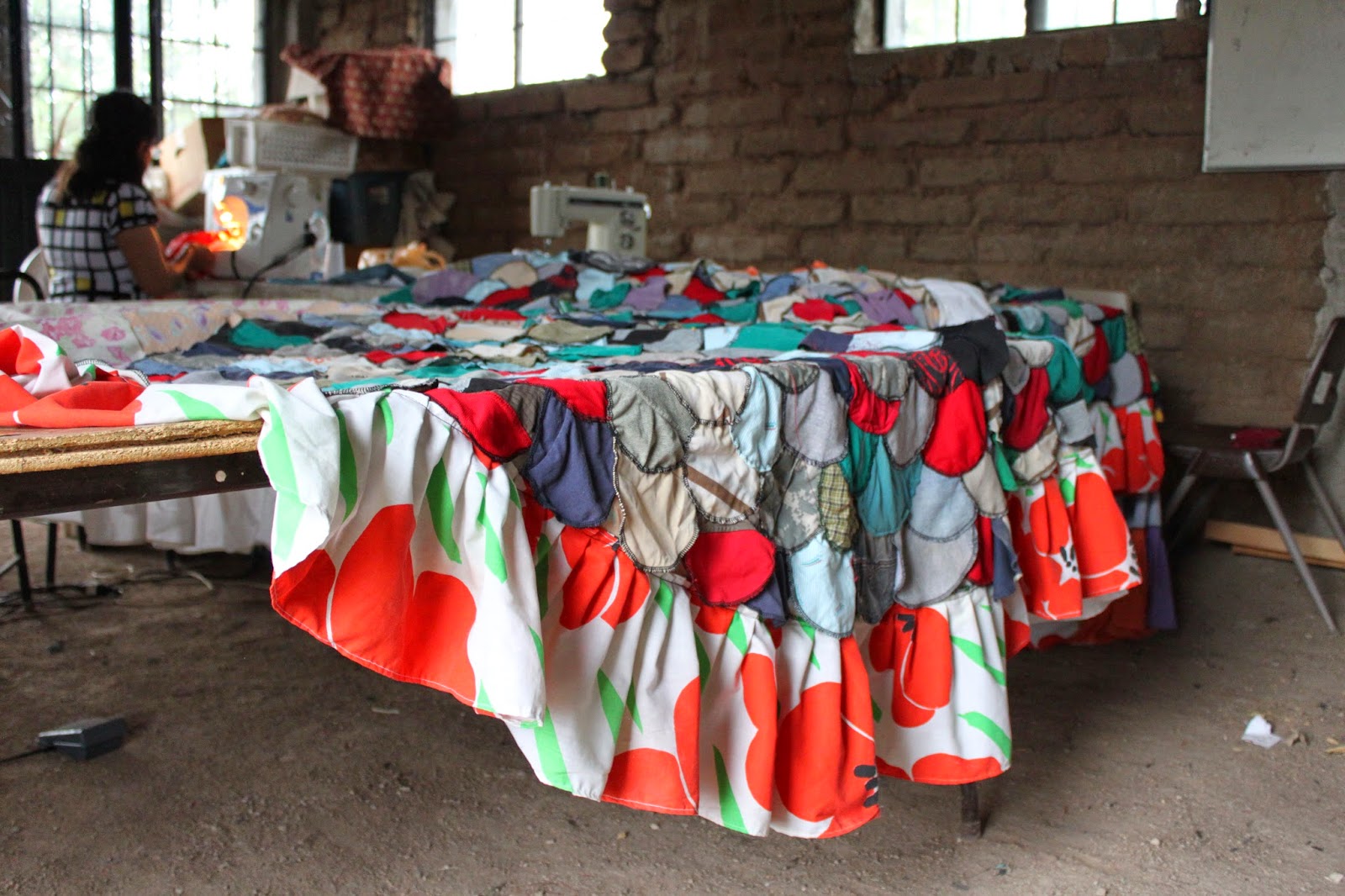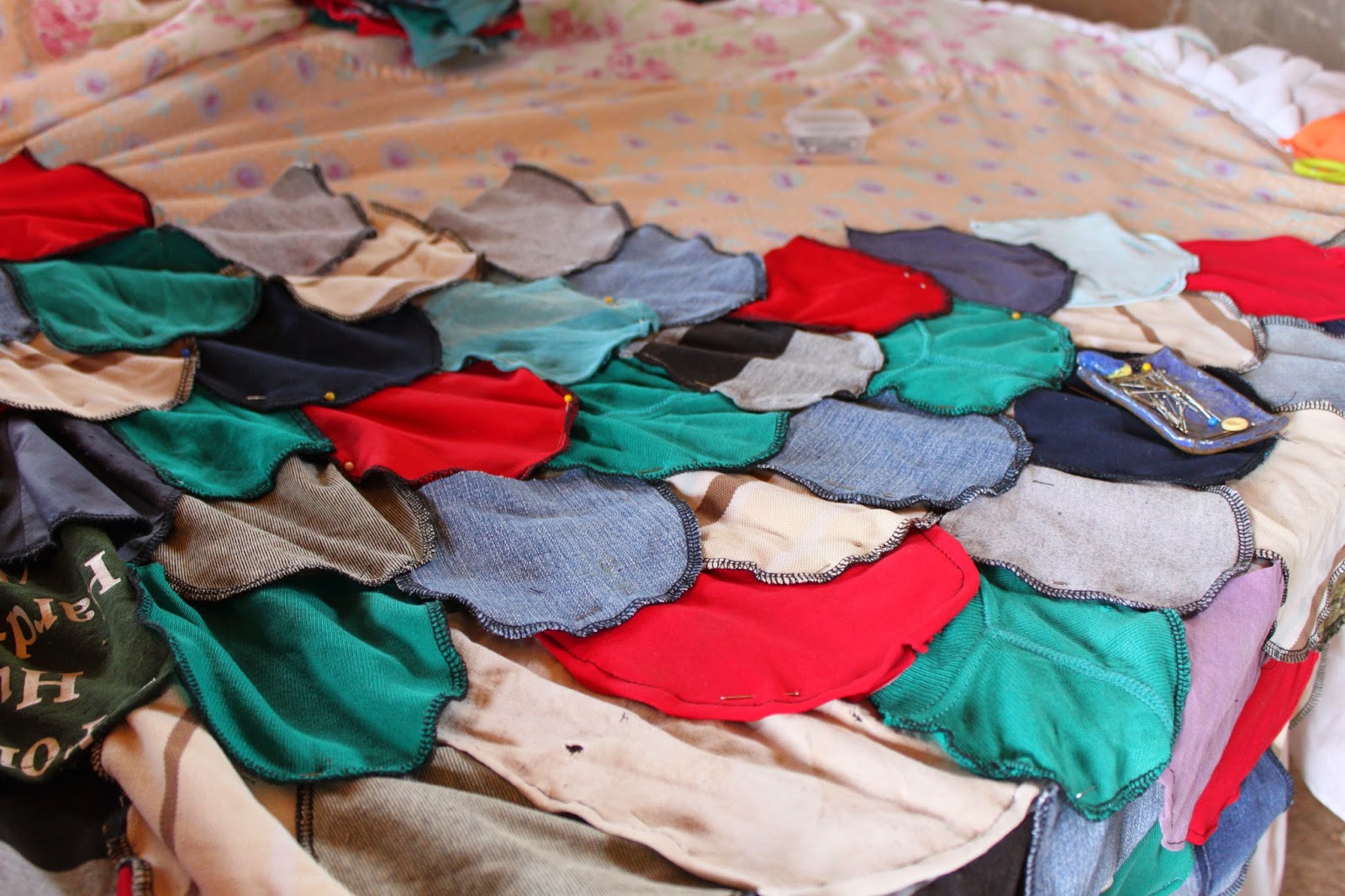With many thanks, we present to you...
The hard work of three weeks!
During these weeks we collected the clothes from the desert, washed them by hand in tubs like these (note the highly-effective tools: a hose, a coke bottle attached to a broom handle and a rake)...
we sewed an enormous mexican folkdance skirt...
we cut up the clothes we collected from the desert, pinned them, and began to sew...in the final days working until we were squinting to see!
We collaborated with the folks at the rehabilitation center, CRREDA....
 |
| Ruben and Mickey. |
and recorded interviews of their stories about life on the US-Mexico border...
 |
| Lola and Vanessa |
and finally, we celebrated! We danced, we played music, we shared our experiences and our thanks for this amazing time to come together and create these works of art.
We present: the "Two Sisters/Las Dos Hermanas" - 2 Sister quilts in the form of traditional Mexican folk dance skirts. We started with one humongous skirt and I kid you not-- ONE DAY before the celebration cut it into two still-gigantic skirts.
The Sister on the left is completely finished, and will return with Juna to Ojai to be shared. The other Sister will stay in Agua Prieta, where the sewing group at DouglaPrieta wishes to complete it!
 |
| Gabi chair-modeling the almost-complete falda. |
 |
| The Two Sisters getting ready for the big night. |
We hope to track the stories of the Two Sisters as each one travels, is shown, and is danced in on both sides of the border. In this way, we can also symbolically track the experience of families divided by borders, as they are parted and reunited over time.
And we danced. The finished skirt was worn by woman after woman, girl after girl, as some of the more experienced dancers showed us how to work a falda.
Borders are places of division. They are also places where two things meet: places of coming together. As the project moves forward, we come back to the US with amazing new friends and a new experience of the kinds of connection that are possible between our two countries.
SO many people were involved in creating these Sisters. From the sewing bees in Ojai, Portland, and Agua Prieta, to the funding from friends and family all over the country, to the loan of a camera, to the ride to the airport shuttle, to the messages of support from so many. In particular we wish to thank the folks at Frontera de Cristo, DouglaPrieta, and CRREDA, for keeping us fed, sheltered, and in the right places, and for whole-heartedly diving in to participate.
Stay tuned. We have a video to edit, quilts in process, workshops on the horizon...and we can't wait to share them with you!
wow,
Juna & friends















